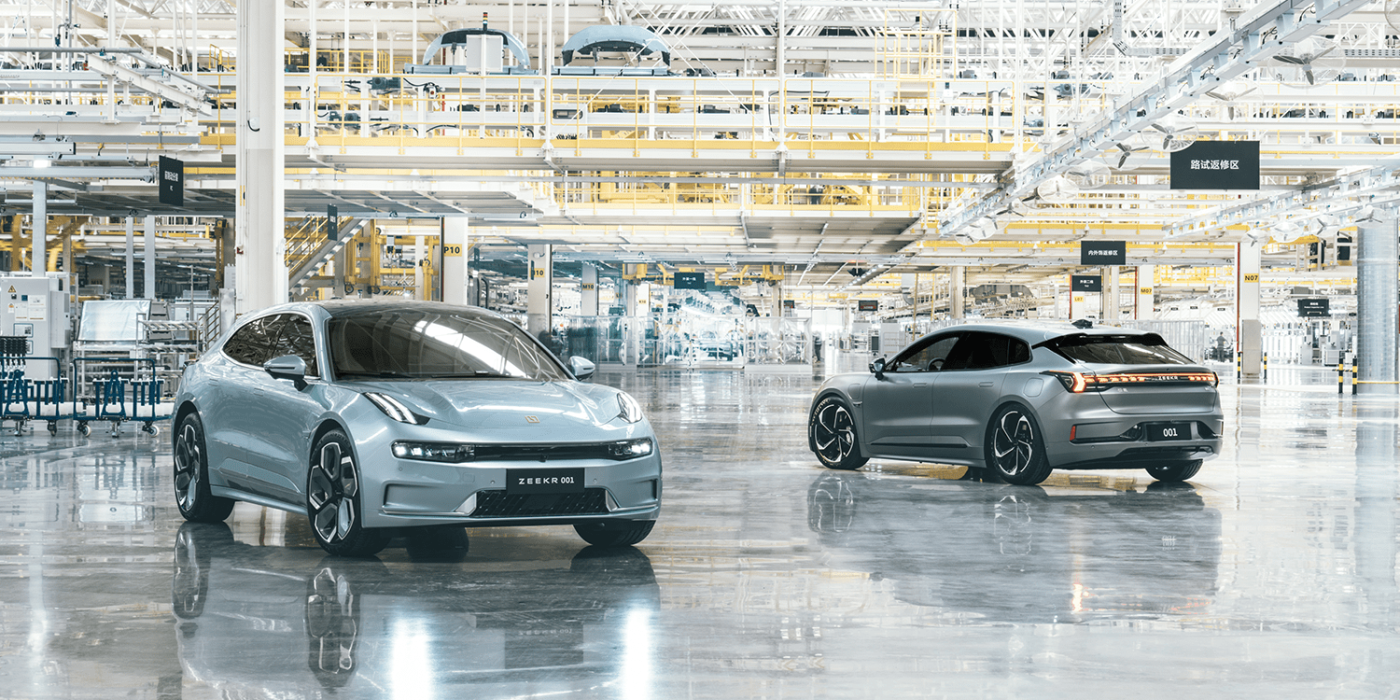Geely presents product strategy up to 2025
Geely has unveiled its ‘Smart Geely 2025’ strategic plan. Under the plan, the Chinese car company aims to achieve annual sales of 3.65 million vehicles under the Geely Auto, Lynk & Co, Geometry and Zeekr brands by 2025. Geely has also launched a new global hybrid powertrain brand.
Regarding the sales plans: of the 3.65 million vehicles to customers annually by 2025, more than one million are planned to be electrified. In other words, around 30 per cent. The still young premium electric vehicle brand Zeekr alone is to contribute 650,000 units to annual sales. Production and delivery of the brand’s debut model just began.
Geely plans to achieve the ambitious sales figures by launching more than 25 new models of the aforementioned brands in the next five years. Geely Auto will launch more than ten smart and electrified models powered by hybrid drive solutions from a new Geely brand, it says. More on the latter in a moment. Geometry is expected to launch at least five new models based on all-electric platforms and SEA architecture from 2022. Lynk & Co is expected to launch more than five smart models, although they are not talking about electrified models here. Finally, Geely is still planning to launch a new BEV brand in 2023, which should bring out five new all-electric models “offering users new options for smart, zero-emission mobility”.
In addition to growth in China, the group is also aiming for rising export figures. Of the targeted annual sales of 3.65 million vehicles by 2025, the group wants to sell more than 600,000 vehicles abroad. The Geely Auto brand is to concentrate on the markets in Eastern Europe, the Middle East, Southeast Asia and South America. Lynk & Co is to gain a foothold in Russia, Malaysia, Australia and New Zealand, among others, with Geely aiming to become “number one in Malaysia and number three in ASEAN markets”. In its overview, the manufacturer only mentions Western Europe in the form of the EU as a target market for “new energy products”.
Essentially, Geely’s new strategy makes it clear that the company sees its future primarily in the market for intelligent vehicles. To this end, it is seeking alliances in the areas of chips, software, operating systems, intelligent connectivity and satellite networks, according to the company’s headquarters. As concrete projects, Geely mentions the further development of the electronics architecture GEEA2.0 to GEEA3.0, in the course of which access to central cloud computing functions is to be paved. Geely also announces the mass production of an in-house developed chip (“SE1000”) for early 2022.
To create an integrated vehicle software user experience, Geely has opened up its software architecture with more than 1,000 API interfaces, software tools and platforms, and service partnerships with more than 1,000 digital partners to developers around the world, the Chinese company says. By 2025, they now want to “launch one to two FOTA (Firmware Over the Air) upgrades every quarter, covering complete vehicle and powertrain solutions, so that vehicle development can evolve from manufacturer-driven to user-driven software and user-driven co-creation”.
With a view to developing intelligent vehicles, Geely Holding Group, as the parent company, will also contribute. It has now completed the establishment of 305 high-precision space and time reference stations, he said. “China’s high-precision surveying and mapping data will be completed by 2023 and made available to Geely Auto Group to be used for truly safe autonomous driving,” it said in a statement. Against this backdrop, the commercialisation of autonomous driving level four technologies will be realised by 2025 and technologies for autonomous driving level five will be developed.
But back to the core topic of electromobility: In terms of batteries, Geely continues to focus on module and battery pack technologies. In addition, there are battery joint ventures with partners – including CATL. Geely will continue to pursue its ambitions in the battery exchange business. As reported, 5,000 battery swapping stations are to be set up in 100 cities by 2025. Currently, there are around 100 battery exchange stations throughout China, which can exchange batteries “in just 59 seconds”. The service is currently used by the Geely-funded ride-hailing service CaoCao Mobility, among others.
In the area of electric motors, Geely is turning to 800-volt technologies, including silicon carbide power modules and oil-cooled motors, among others. By 2023, the manufacturer wants to start mass production of its silicon carbide power modules.
In addition, the Chinese are presenting a new global brand specifically for hybrid drives. The start-up called Leishen Power offers products for full hybrids, range extender models and plug-in hybrids with a purely electric range of up to 200 kilometres. A modular hybrid drive platform called Leishen Hi-X will serve as the hub. It will be used for A- to C-segment models and in HEV/PHEV/REEV configurations for brands within the Geely Auto Group, Geely says.
Already at the end of August it became public that Geely Auto and Lynk & Co in particular are likely to orient themselves more strongly towards hybrid drives. The battery size of the PHEV models is to be increased in such a way that the plug-in hybrids of the Geely brands will have a 100 to 200 kilometre electric range in the future, it was said at the time.
zgh.com (strategy), global.geely.com (Leishen Power)





1 Comment